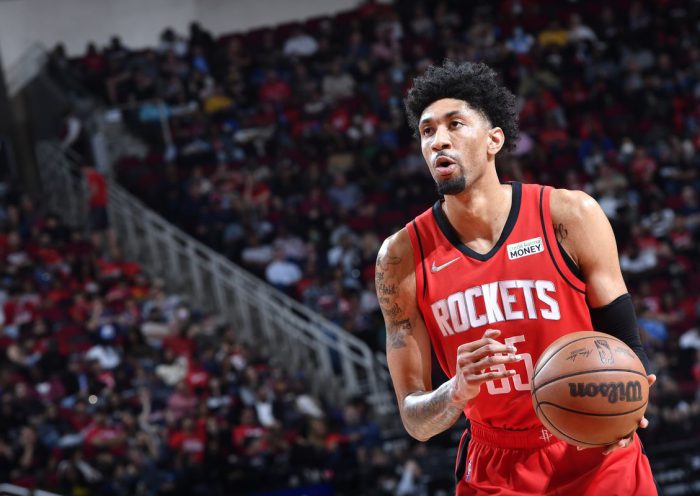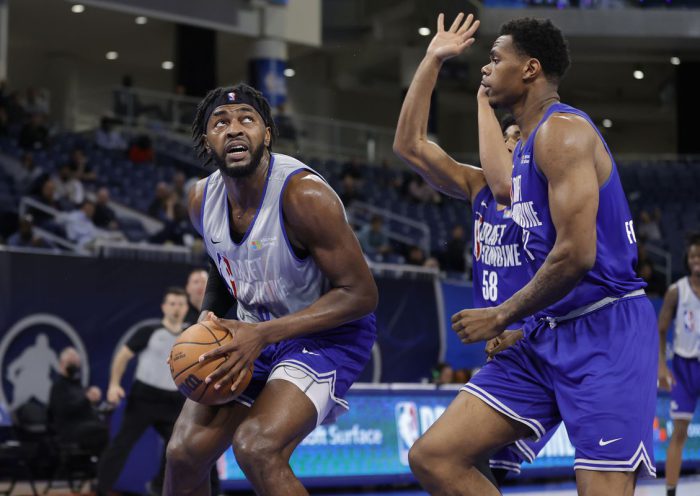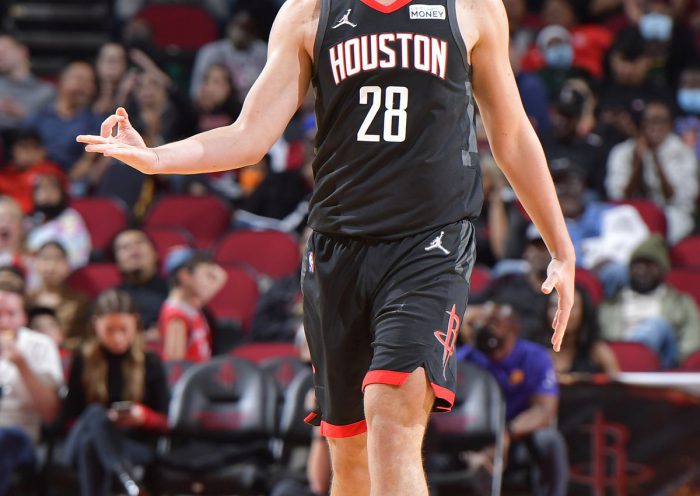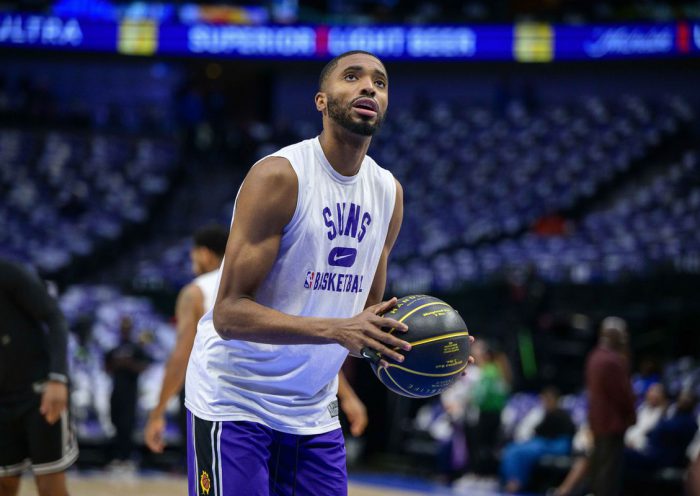Home #10 Jalen Smith Men 2021 NBA Finals BoundAssessing Scouting Accuracy For The Last 20 Years (Part II)
Welcome back to the exploratory series on recruiting rankings gathered by RSCI!
If you missed the first installment, fear nothing. Here is a quick recap of the introduction so you don’t feel lost, although I recommend you go through that first post you get a better picture of how things have worked out during the past few years in terms of prospect scouting and ability assessment.
What I’m aiming with this series is to get a better sense of how different scouting services have fared in terms of ranking the Top-100 prospects of each of the last 20 classes of hoopers around the nation coming out of high school. For that I’m using a database based on data from the Recruiting Services Consensus Index (RSCI), which gathered information from multiple scouts and generated composite rankings of recruits for each year. On top of that, using information coming from Basketball-Reference.com, I have access to the Win Shares produced by each player that eventually reached the NBA.
Just armed with that information we can quickly see how rankings and production align, and even generate some metrics such as the simple “Prospect Value (PV)” metric I introduced in the first chapter. It just puts together the ranking of prospects and their production in order to find high-ranked busts or low-ranked diamonds. The higher the PV of a player, the more underrated he was back in the day by scouts.
With all of that I was able to answer questions as how many players have made the NBA while being ranked in the RSCI data set, how many years their careers lasted, who were some of the most productive, and who were completely misjudged by scouts.
So here is to another round of questions and answers for you to enjoy!
How many RSCI-ranked players skipped college? Did they made it to the NBA?
Just days after the 2005 draft, the NBA decided to ban the prep-to-pros path for high school players. Although there have been special cases of players taking that route since then, the likes of Andrew Bynum, Gerald Green or Lou Williams are some of the last ones to ever make it straight from high school being drafted in June 2005.
The route will be re-open eventually, with 2022 as the expected first year to see prep hoopers make the leap from 12th grade to the NBA without playing any college ball.
Looking at every player ranked in the RSCI listings from 1998 to 2005, and as expected, there are exactly 800 in the data set. Of those, 62 players don’t have a college attached to their name, and among them, 25 didn’t make it to the NBA.
The difference between college-bound recruits and prep-to-pros executioners is staggering. Of the 800 ranked prospects, 92 percent opted to play college ball before trying to go pro.
In terms of the percentage of players that made it to the NBA in relation to the two different paths (from collegiate ranks or straight from high school) the difference flips in favor to HS players. Only 31 percent of NCAA players eventually played in the NBA, while 60 percent of players who opted to try the pro-level straight from secondary school made it.
This is normal, given that the average high school player is not a top-tier prospect nor is in position to challenge for a roster spot in the best league in the world. Only those truly gifted could make the jump straight back in the day (think of LeBNBA Shoes and Footwearron James or Dwight Howard), that is why only 62 players from 1998 to 2005 even tried it. Of those who swung and missed, just two were among the Top-10 recruits in their respective classes:
2001 No. 5 | Ousmane Cisse
Although Cisse was drafted by the Denver Nuggets with the 47th pick in 2001, he suffered an injury and therefore Denver released him prior to putting him on the court even once. He opted to move to Russia and made a return to American soil in 2002 to play with the Orlando Magic in preseason before being cut, and in 2003 the Raptors also signed him for a couple of days but never saw him dress in Toronto’s colors.
2002 No. 10 | DeAngelo Collins
The fact that Collins made it to the 2002 McDonald’s All-American game speaks for itself. He scored 15 points, sna chris paul phoenix suns jerseytched six boards and closed his high school days as a top-recruit ranked over players like Andre Iguodala, JJ Redick or Deron Williams. He went undrafted, though, and although there were whispers about a potential offer by the Toronto Raptors they ultimately passed on him and he moved to Europe. The 76ers and the Mavs gave him a couple of chances during the 2004 and 2007 Summer Leagues but he never made a final roster.
With the prep-to-pros path about to re-open soon, it will be interesting to see if yesteryear trends change, or if kids have changed the way they see themselves and their chances to make it to the NBA without ever stepping on an NCAA court.
Which college has been able to attract the most talent from the RSCI rankings?
From 1998 to 2018, up to 182 different colleges have been able to get at least one Top-100 prospect present in the RSCI rankings. To be fair, that is a huge number. Which isn’t that fair, is that half of the recruits were spread between only 26 of those 182 schools.
This has happened since NCAA started to run basketball operations and college turned into blue bloods, winning recruiting battles over smaller schools on a yearly basis. That is why of the 2003 recruits to pick a college, 68 went to Kentucky, 61 to Duke, 53 to Kansas, and 50 to UCLA and North Carolina. Only those five colleges amount to a haul of 282 prospects, which is already 14% of the field!
There orange devin booker jersey are a few interesting bits hidden in the data. Let’s go through some of them by answering some easy questions.
Which college has recruited the best ranked-prospects on average?
The straight and plain simple answer to this question looking at the numbers is Illinois at Chicago (average recruit ranked No. 19), followed by Duke (No. 20), Kentucky (No. 24), and North Carolina (No. 27).
The problem with that answer, as you may have already thought of, is that Illinois only got one prospect from the total of 2003 while Duke, Kentucky, and North Carolina all have 50 or more to their name.
The kid who opted to go play college ball in Illinois at Chicago was Cedrick Banks in 2000. He was a coveted prospect and was named the best high school player of Chicago over guys like Dwyane Wade and Eddy Curry. He became a legend for his college and that was pretty much it for Banks, who never made it to the NBA and played professionally in Europe.
Who’s got the most Top-10 prospects since 1998?
Before getting to the winner, let’s make something clear. Remember when I told you that there were 182 diffeJohn Wall Jerseysrent colleges in the data set? Well, turns out only 47 of them (26 percent) ever got their hands on a Top-10 prospect. And again, 50 percent of those were shared by only six schools, leaving the other 41 with only 90 players to fight for.
Of course, Kentucky leads the way again with 24 Top-10 ranked prospects recruited since 1998. The Wildcats are closely followed by Duke (22), North Carolina (17), a phoenix suns booker jerseynd Kansas (10). UCLA and Michigan State round the top-6 with eight recruits each.
Who has developed the most productive NBA players?
By usiNBA Draft Hatsng the Win Shares accrued by players once they turned pro and during the duration of their NBA careers, and the years they spent playing pro-ball, we can calculate their WS-per-year.
To get an answer to the question we just have to then add those averages for the players to attend each college, and divide ayton suns jersey the result by the total number of recruits they got over time. The school with the greaMarkelle Fultz Jerseystest average wins, and that is none other than Washington State.
Washington State, youNBA Vintage Clothing say? Yes, but we have run into another case similar to that of Illinois at Chicago a couple of questions ago. Washington State only recruited one Top-100 prospect (2008 No. 58 Klay Thompson) and he’s on his way to a potential Hall of Fame worthy career averaging 5.9 WS/Yr.
Something similar happens with Meridian Community College. They only recruited another Top-100 player in Jamario Moon back in 1999. Although he didn’t play in the NBA until 2008 and only spent five seasons in the league he averaged a good 2.9 WS/Yr.
Obviously, the more players a college recruit, the bigger the chances the outcome Phoenix Phoenix Suns #3 Chris Paul Youth 2021 NBA Finals Bound Statement Edition NBA Jersey Orange Youthtends to the average. Even with that, Kentucky and Duke sit on third and fourth place with averages of 1.45 and 1.34 WS/Yr having recruited 68 and 61 kids respectively.
And that is all for this second part of the RSCI exploratory series. We have crunched the data to see how the prep-to-pros path worked back in the day, to discover the most success colleges in terms of recruiting, and finally to find those schools to build the most productive NBA players.
Keep an eye on this space to read about much more insights the data can offer if broken down properly during the following devin booker jersey throwback days.



